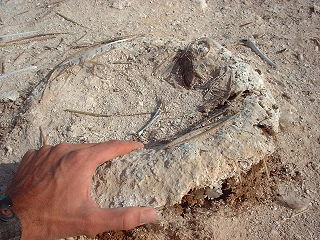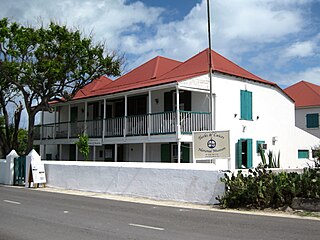The Conch Bar Caves, located on Middle Caicos, is the largest above-ground cave system in the Bahamas-Turks and Caicos Islands archipelago. [1]

Middle Caicos, also Grand Caicos, is the largest island in the Turks and Caicos Islands. To the west, it is separated from North Caicos by Juniper Hole, and to the east, from East Caicos by Lorimer Creek, both narrow passages that can accommodate only small boats. The island is known for its extensive system of caves and its significant Lucayan Indian archeological sites. The island is connected to North Caicos via a causeway.

The Turks and Caicos Islands are a British Overseas Territory consisting of the larger Caicos Islands and smaller Turks Islands, two groups of tropical islands in the Lucayan Archipelago of the Atlantic Ocean and northern West Indies. They are known primarily for tourism and as an offshore financial centre. The resident population is 31,458 as of 2012 of whom 23,769 live on Providenciales in the Caicos Islands. It is the third largest of the British overseas territories by population.
The caves are near their namesake village of Conch Bar. In the 1880s, the caves were mined for guano, which was exported as fertilizer. Many markings and etchings have been left by miners in the caves, many with names and dates. It was during this time of excavation that a number of Lucayan artefacts were discovered within the cave system.

Guano is the accumulated excrement of seabirds and bats. As a manure, guano is a highly effective fertilizer due to its exceptionally high content of nitrogen, phosphate and potassium: nutrients essential for plant growth. Guano was also, to a lesser extent, sought for the production of gunpowder and other explosive materials. The 19th-century guano trade played a pivotal role in the development of modern input-intensive farming, but its demand began to decline after the discovery of the Haber-Bosch process of nitrogen fixing led to the production of synthetic fertilizers. The demand for guano spurred the human colonization of remote bird islands in many parts of the world. During the 20th century, guano-producing birds became an important target of conservation programs and influenced the development of environmental consciousness. Today, guano is increasingly sought after by organic farmers.

A fertilizer or fertiliser is any material of natural or synthetic origin that is applied to soils or to plant tissues to supply one or more plant nutrients essential to the growth of plants. Many sources of fertilizer exist, both natural and industrially produced.
The Lucayanpeople were the original inhabitants of the Bahamas before the arrival of European colonizers. They were a branch of the Taínos who inhabited most of the Caribbean islands at the time. The Lucayans were the first inhabitants of the Americas encountered by Christopher Columbus. The Spanish started seizing Lucayans as slaves within a few years of Columbus's arrival, and they had all been removed from the Bahamas by 1520.










